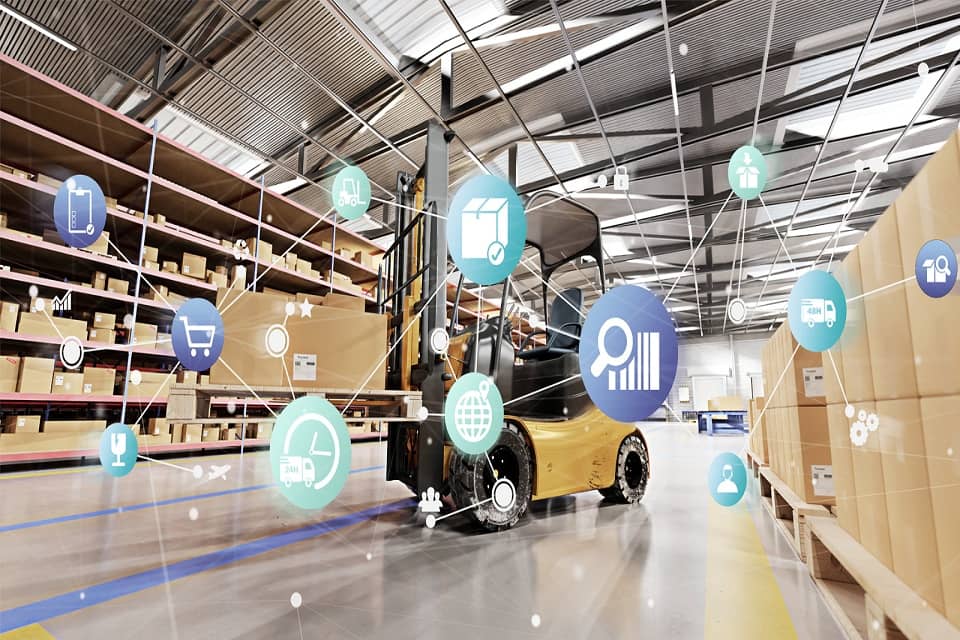It is quite an astonishing fact to know that a country like the US has about 1% of its GDP equivalent to the value of its reverse logistics activities.
More than 6% of the products sold are returned to the seller, and their value is a whopping 40 billion. These figures have been collated from several industry-leading and US government researches.
When such figures are compared to developing countries, the numbers are only higher, indicating customer dissatisfaction.
For industries to gain a competitive advantage over their adversaries, it’s important to set up channels for planning and implementing the flow of material, in processed inventory or finished products, back to their origin from the destination.
Improve Efficiency of Reverse Logistics
From e-commerce giants to OEMs, the voluminous backward movement of products can be difficult to manage in terms of tracking and decisions on its future course of action.
Organizations will find it difficult to understand the nature of the returned products and, as a result, may find it difficult to re-route them back to the market or send them for re-manufacturing.
As a result, many products that could have been re-engineered back to the market are being sent to the disposal section, resulting in a loss of revenue.
Many non-conforming products may pass through quality checks and end up in the warehouse for resale, leading to a decrease in brand value.
Today, business organizations worldwide play with very narrow profit margins, and the market has been flooded with credible players.
To stay ahead in the competition, they must invest in gathering knowledge. It should focus on the art of reuse through proper goods-return management.
However, handling reverse logistic software like CartonCloud tests warranty administration strategic capability for any organization. Business houses use this for altruistic reasons and gain higher brand management.
According to studies, it has been seen that the bulk of the customer base will not prefer to do further business. If the return policy is not fair and hassle-free, the number is above 80%!
The best methods of reverse logistics integration are carried out in the following basic steps.
Let’s begin with establishing a linear return process flow for returns management. The managers should design the best possible process flow to facilitate returning the goods from customers.
This includes the primary interaction of the customer with customer care, which differentiates the claim according to different product-failure parameters.
The internal logistics team may then plan to extract the goods and transport them to pre-designated centres for further processing.
Next comes the establishment of a sound logistics model. The step is marked with the involvement of the logistic team, internal and external (3PLs).
The internal logistics team need to devise the optimum route using the advanced critical path method.
However, it may be in the organization’s interest to go for 3PLs to save time and money, which would otherwise be spent internally planning and coordinating the activities.
Setting up the distribution centres or controlling points is critical in deciding the strategic placement of distribution centres or warehouses.
After the segregation of products, done in the previous level, whether the product can be reworked and reused or sent to disposal centres is decided.
If a product needs to be reworked, it may be dispatched to the plant directly by the 3PL. Supplier Recovery and other parts of a goods return policy must also be well defined.
The OEM should not forget about the role of third parties during such a process and remember to check on the integration quality of the IT systems with them.
Maintaining communication should be a top priority, as customers have the right to know every stage through which a product passes. It will invoke a sense of trust and build lasting business relationships.
The Benefits of Implementing Logistics Software
#1. More Control
Freight logistics software, also known as truckload logistic software, gives companies complete control over their shipping process. It allows them to choose the shipping option that suits their needs.
Third-party logistics (3PL) providers can develop shipping solutions for companies. This means that shipping companies may miss out on the best shipping options.
It is easy to use and tailored to each company’s shipping process. Logistics software does not require any logistics knowledge.
A SaaS model allows logistics software to be easily adapted to changing shipping requirements.
#2. Lower Cost
For a simple reason, logistics software is less expensive than 3PL: It’s priced as a solution and not as a consultancy service.
A company’s shipping needs determine logistics software costs. This allows companies to only pay for the services they require.
If a small business’s shipping requirements are limited to less than truckload (LTL), the logistics-software options will only reflect this.
Logistics software saves companies money and helps them cut costs for shipping. Some 3PL providers, such as. Some 3PL providers.
#3. Integrated Shipping Solutions
Shipping companies can only use the transportation assets of asset-based providers to provide shipping solutions. Trucks, boat planes, etc.).
With logistics software, companies can create shipping solutions that include multiple modes of transport to a specific location.
Logistics software may show that ground shipping is cheaper than air transport for shipments to certain locations.
A company can significantly impact its bottom line by implementing integrated shipping solutions every day, given the high shipping cost.
#4. Significantly Improved Bottom-line
Logistics software can help companies improve their bottom lines by presenting the best shipping options.
It can also help companies save money by eliminating the need for in-house logistics professionals to buy their shipping fleet once they have enough funds.
Logistics software is often viewed as a solution for small and mid-sized businesses that cannot hire logistics specialists.
However, it can also be used by companies with annual shipping costs exceeding six figures.
This allows them to operate without the need for logistics professionals. After just one year, logistics software can help companies reduce shipping costs by 10%.
- How Does GrooveFunnels Marketing Software Work?
- How To Recover Files with EaseUS Data Recovery Software
- How To SigmaCare Login: SigmaCare EMR System Software
- How Personal Contact Management Software Save Time?
- How To Become A Custom Software Developer
For More How-To Tips and Information about Logistic Software, Visit Etech Spider.




